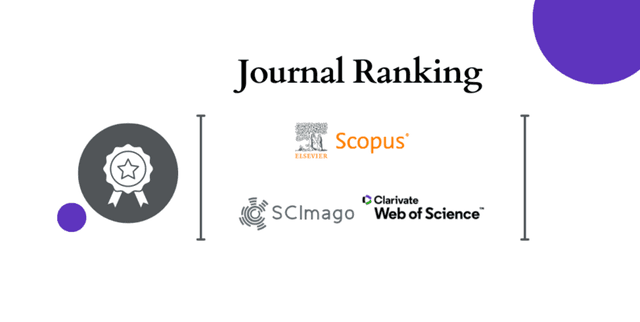Cross-Disciplinary Journal Citation Data
Education & Learning Analytics
Tags and Keywords
Trusted By




"No reviews yet"
Free
About
Journal ranking data provides metadata, citation metrics, and ranking information for academic journals. This collection of data is sourced from prominent indexing databases like Scimago Journal Ranking, Scopus, and the Web of Science Master Journal List. It includes various metrics such as CiteScore, H-index, and the SJR-index, which are calculated from yearly citation data to reflect a journal's quality. The data also offers detailed information on the subject areas and categories of the journals, making it valuable for research, data analytics, and understanding the academic publishing landscape.
Columns
- Rank: The overall rank of the journal, derived from the sorted SJR index.
- Title: The name of the journal.
- OA: Indicates if the journal is Open Access.
- Country: The country where the journal originates.
- SJR-index: A citation index calculated by Scimago.
- CiteScore: A citation index calculated by Scopus.
- H-index: The Hirsh index, indicating the largest number 'h' where at least 'h' articles have been cited at least 'h' times.
- Best Quartile: The top quartile (Q-index) a journal achieves in any subject area.
- Best Categories: The subject areas corresponding to the journal's top quartile.
- Best Subject Area: The journal's highest-ranking subject area.
- Best Subject Rank: The rank within the highest-ranking subject area.
- Total Docs.: The total number of documents published by the journal.
- Total Docs. 3y: The total number of documents published in the last three years.
- Total Refs.: The total number of references in the journal.
- Total Cites 3y: The total number of citations received in the past three years.
- Citable Docs. 3y: The total number of citable documents from the past three years.
- Cites/Doc. 2y: The ratio of citations to documents over the past two years.
- Refs./Doc.: The ratio of references to documents.
- Publisher: The name of the publishing company.
- Core Collection: The name of the Web of Science core collection.
- Coverage: The starting year of the journal's coverage.
- Active: Indicates if the journal is active or inactive.
- In-Press: Indicates if the journal has articles in press.
- ISO Language Code: The three-letter ISO 639 code for the journal's language.
- ASJC Codes: All Science Journal Classification codes for the journal.
- Life Sciences: Top-level subject area indicator.
- Social Sciences: Top-level subject area indicator.
- Physical Sciences: Top-level subject area indicator.
- Health Sciences: Top-level subject area indicator.
- 1000 General to 3600 Health Professions: ASJC main category indicators.
Distribution
The data is available as a single CSV file named
journal_ranking_data.csv with a size of 5.57 MB. It contains approximately 18,000 records across 56 columns. The data is expected to be updated annually.Usage
This data is suitable for a variety of applications, including:
- Academic Research: Analysing trends in scholarly publishing and journal performance.
- Data Analytics and Visualisation: Creating dashboards and reports to compare journal metrics across different fields and countries.
- Educational Purposes: A valuable resource for students and beginners learning data analysis techniques.
- Bibliometric Studies: Investigating citation patterns and the impact of academic journals.
Coverage
The data covers over 18,000 academic journals from 94 countries, with the United Kingdom and the United States being the most represented. The publication coverage start years range widely, with some journals dating back to the 19th century, though most entries began coverage between 1983 and 2010. The vast majority of journals (91%) are published in English. The dataset spans numerous academic disciplines, including Medicine, Arts and Humanities, Social Sciences, Engineering, and Computer Science.
License
CC0: Public Domain
Who Can Use It
- Researchers and Academics: To assess journal quality, identify publication venues, and conduct meta-research.
- Librarians and Information Scientists: For collection management and analysis of scholarly communication trends.
- Data Scientists and Analysts: To practice data cleaning, analysis, and visualisation on a real-world tabular dataset.
- University Administrators and Policymakers: To evaluate research output and institutional impact.
Dataset Name Suggestions
- Global Academic Journal Rankings & Metrics
- Scholarly Journal Performance Indicators
- Cross-Disciplinary Journal Citation Data
- Academic Journals Metadata and Ranking Analysis
Attributes
Original Data Source: Cross-Disciplinary Journal Citation Data
Loading...
